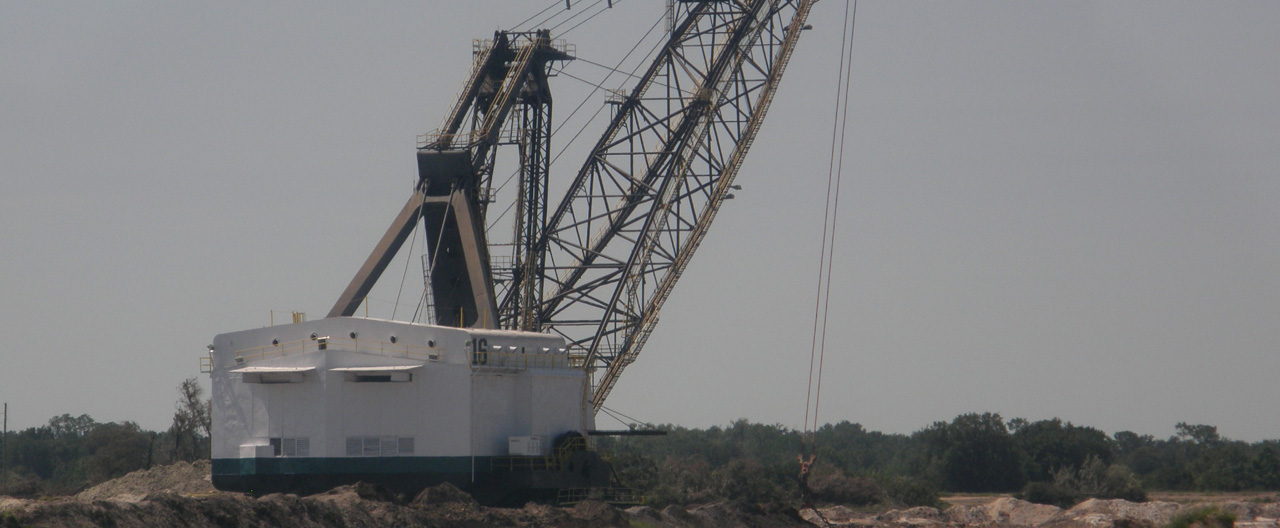Introduction
Phosphate mining and processing and reclamation of the disturbed lands come with state and federal requirements to protect the health of the public as well as the health of the environment. Issues of special regulatory concern are waste disposal, environmental radioactivity and the possibilities of air and water pollution.
This section outlines environmental and safety issues connected to the phosphate industry. When considering environmental quality and safety there are three major categories: air, water and land. The first sections of this chapter organize the issues into these categories.
Common terms of concern:
Radiation, radioactivity, radon, heavy metals and toxic emissions are words heard in connection with the phosphate mining and processing industry.
Radioactivity is a natural part of all things as is the radiation it gives off.
We get radiation from outer space as well as our own atmosphere and the ground. There are also sources of radioactivity found naturally in the food and water we consume and the air we breathe. We are also exposed to many man-made materials like bricks, cigarettes and smoke detectors that contain radioactive materials. Exposure to radiation also results from sources such as medical x-rays and other medical procedures.
In relation to phosphate, uranium along with it daughter products like radium, is in the ground naturally with phosphate. In processing the rock a small amount of uranium goes with the phosphoric acid and granulated fertilizer products. At one time this uranium was recovered as a product. The radium goes with the phosphogypsum by-product. Radium-226 decays to Radon-222, making phosphogypsum’s low-level of radioactivity an issue. Reclaimed lands often have higher radiation levels because higher concentrations of radioactivity are near the surface than before mining, and the cracks and openings in the ground provide new pathways for the radon to reach houses directly above.
How dangerous is this radiation?
We know that radiation at high levels, like that emitted in Japan when atom bombs exploded, is harmful to human health. Since we do not know with certainty how much radiation is dangerous, regulations controlling the amount of radiation members of the public may be exposed to are constructed in a conservative manner that is “most protective” of human health and account for radiation doses a person receives from all sources.
FIPR research indicates that radiation connected to phosphate mining does not significantly add to the average overall dose a person receives as a natural part of life.
Metals: More than three-fourths of all the known elements are metals and they are present in varying concentrations in most soils in the world. Many metals are essential to our health and if we don’t get enough of them we will get sick. In large amounts, however, they can be harmful. Consider that metals found naturally in our diet like iron are known as “essential minerals” or “micronutrients,” but in excessive amounts they are known as “contaminants.”
Heavy metals, like lead and mercury, are of concern in general because at high enough concentrations in our bodies they can cause toxic effects. These, however, are frequently absent in rock mined today and if found it is not in concentrations high enough to be of concern.
All of the metals found in Florida phosphate, primarily in trace amounts, include the light metallic elements aluminum, iron, sodium, potassium, titanium, vanadium, chromium, manganese, copper, nickel, zinc, yttrium, gadolinium, cerium, barium, lanthanum and cadmium. Two other light metallic elements, calcium and magnesium are found in higher concentrations.
Also found is trace quantities are: arsenic and silicon (metalloids or non-metals that share some properties of metals), uranium, radium, thorium and their daughters.
Toxic refers to an observable negative biological effect. The word “toxic,” however, is sometimes applied to emissions that have a foul smell or have names that sounds dangerous. Dihydrogen monoxide, for instance, could sound dangerous if you did not know it was a chemical name for water.
